MaryAnn Bernal's Blog, page 132
December 4, 2015
History Trivia - Charlemagne becomes sole ruler of the Frankish empire
December 4
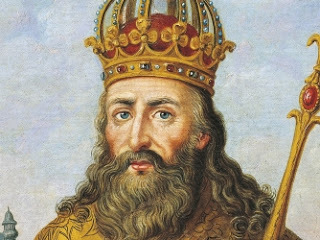
771 Austrasian King Carloman died, leaving his brother Charlemagne sole ruler of the Frankish empire.
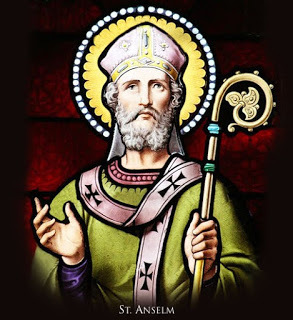
1093 Anselm of Canterbury was consecrated as Archbishop.
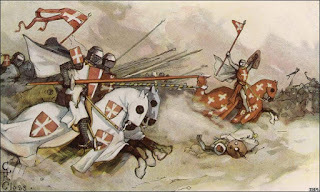
1110 First Crusade: The Crusaders sacked the Syria harbor city Saida (Sidon).

771 Austrasian King Carloman died, leaving his brother Charlemagne sole ruler of the Frankish empire.

1093 Anselm of Canterbury was consecrated as Archbishop.

1110 First Crusade: The Crusaders sacked the Syria harbor city Saida (Sidon).
Published on December 04, 2015 02:30
December 3, 2015
Press Announcement: Radar Scans Reveal Hidden Chamber in Tutankhamun Tomb with 90 Percent Certainty
Ancient Origins
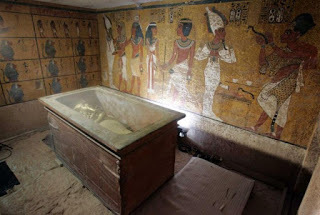 A press conference held this morning in Luxor with Egyptian Antiquities Minister Mamdouh el-Damaty revealed the results of a three-day operation to scan behind the walls in the burial chamber of Tutankhamun. The official investigations were designed to test out the theory by archaeologist Nicholas Reeves that the tomb of Tutankhamun contains two hidden chambers and that one of them is the final resting place of Queen Nefertiti. According to the Minister, the scans show that “it’s 90 per cent likely there is something behind the walls”.
A press conference held this morning in Luxor with Egyptian Antiquities Minister Mamdouh el-Damaty revealed the results of a three-day operation to scan behind the walls in the burial chamber of Tutankhamun. The official investigations were designed to test out the theory by archaeologist Nicholas Reeves that the tomb of Tutankhamun contains two hidden chambers and that one of them is the final resting place of Queen Nefertiti. According to the Minister, the scans show that “it’s 90 per cent likely there is something behind the walls”.
The Ministry of Antiquities in Egypt launched high-tech analyses within the boy king’s tomb on November 4 and initial infrared scans of the walls of Tutankhamun’s tomb detected an area of greater heat, which pointed to a hidden chamber. Three days of radar scans have now supported these initial findings.
"There is, in fact, an empty space behind the wall based on radar, which is very accurate, there is no doubt. We cannot say at this point however the size of the space behind the wall," Japanese radar specialist Hirokatsu Watanabe said [via ABC News]. "We have the data but we must analyse it to understand. But we are working in the Valley of the Kings, so we are expecting to find antiquities behind the wall."
El-Damaty added, "We can now say that we have to find behind the burial chamber of King Tutankhamun another chamber, another tomb."
Factum Arte scans reveal possible presence of hidden doorsNational Geographic reports that Nicholas Reeves first suspected hidden chambers in Tutankhamun’s tomb following a detailed examination of the Factum Arte scans of the artistic works on the walls of the tomb. Reeves noticed fissures that he thinks may indicate the presence of two sealed doors in the tomb’s north and west walls.
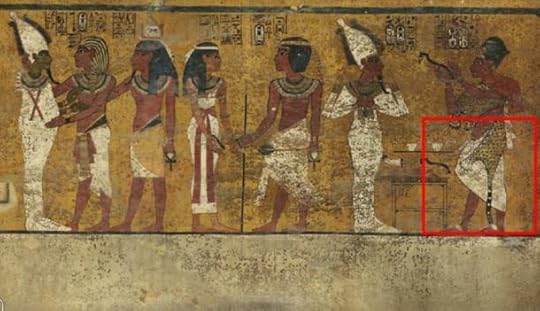 Scans of the north wall of King Tutankhamun's burial chamber have revealed features beneath the intricately decorated plaster (highlighted) a researcher believes may be a hidden door, possibly to the burial chamber of Nefertiti. Credit: Factum Arte.“Cautious evaluation of the Factum Arte scans over the course of several months has yielded results which are beyond intriguing: indications of two previously unknown doorways, one set within a larger partition wall and both seemingly untouched since antiquity,”
writes Reeves in a paper
on his study of the scans. “The implications are extraordinary: for, if digital appearance translates into physical reality, it seems we are now faced not merely with the prospect of a new, Tutankhamun-era storeroom to the west; to the north appears to be signalled a continuation of tomb KV 62 and within these uncharted depths an earlier royal interment—that of Nefertiti herself, celebrated consort, co-regent, and eventual successor of pharaoh Akhenaten.”
Scans of the north wall of King Tutankhamun's burial chamber have revealed features beneath the intricately decorated plaster (highlighted) a researcher believes may be a hidden door, possibly to the burial chamber of Nefertiti. Credit: Factum Arte.“Cautious evaluation of the Factum Arte scans over the course of several months has yielded results which are beyond intriguing: indications of two previously unknown doorways, one set within a larger partition wall and both seemingly untouched since antiquity,”
writes Reeves in a paper
on his study of the scans. “The implications are extraordinary: for, if digital appearance translates into physical reality, it seems we are now faced not merely with the prospect of a new, Tutankhamun-era storeroom to the west; to the north appears to be signalled a continuation of tomb KV 62 and within these uncharted depths an earlier royal interment—that of Nefertiti herself, celebrated consort, co-regent, and eventual successor of pharaoh Akhenaten.”
The Search Continues: Scientists to Use Radar in Hunt for the Tomb of Nefertiti Tutankhamun Death Mask was Made for Nefertiti, Archaeologist says The Elusive Tomb of Queen Nefertiti may lie behind the walls of Tutankhamun's Burial Chamber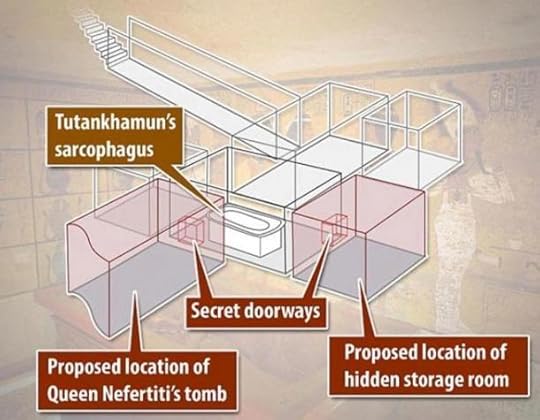 Image showing the location of the two chambers from Dr. Reeves report. The upcoming radar scan will search for their existence. (
Daily Mail
)Tutankhamun hastily buried in Nefertiti’s tomb?Reeves posits that King Tutankhamun’s tomb was unfinished when he died unexpectedly as a teenager in 1332 BC. Consequently, he was hastily buried in the tomb of Queen Nefertiti, the principal wife of Akhenaten, who is believed to have fathered Tutankhamun with another wife. Reeves believes that Tutankhamun’s tomb displaced part of Nefertiti's tomb and assumed some of her burial goods and space.
Image showing the location of the two chambers from Dr. Reeves report. The upcoming radar scan will search for their existence. (
Daily Mail
)Tutankhamun hastily buried in Nefertiti’s tomb?Reeves posits that King Tutankhamun’s tomb was unfinished when he died unexpectedly as a teenager in 1332 BC. Consequently, he was hastily buried in the tomb of Queen Nefertiti, the principal wife of Akhenaten, who is believed to have fathered Tutankhamun with another wife. Reeves believes that Tutankhamun’s tomb displaced part of Nefertiti's tomb and assumed some of her burial goods and space.
Now, following the latest radar scans, Dr Reeves is more certain than ever that his theory is correct. "Clearly it does look from the radar evidence as if the tomb continues, as I have predicted," Mr Reeves said at the conference. "It does look indeed as if the tomb of Tutankhamun is a corridor tomb... and it continues beyond the decorated burial chamber," he added. "I think it is Nefertiti and all the evidence points in that direction."
Nefertiti was the chief consort of the Egyptian Pharaoh Akhenaten (formerly Amenhotep IV), who reigned from approximately 1353 to 1336 BC. Known as the Ruler of the Nile and Daughter of Gods, she acquired unprecedented power, and is believed to have held equal status to the pharaoh himself. However, much controversy lingers about Nefertiti after the twelfth regal year of Akhenaten, when her name vanishes from the pages of history. Despite numerous searches, her final resting place has never been found. She is one of the most searched-for queens in Egyptian history.
The Quest to find Nefertiti, Queen of the Nile The Mysterious Disappearance of Nefertiti, Ruler of the Nile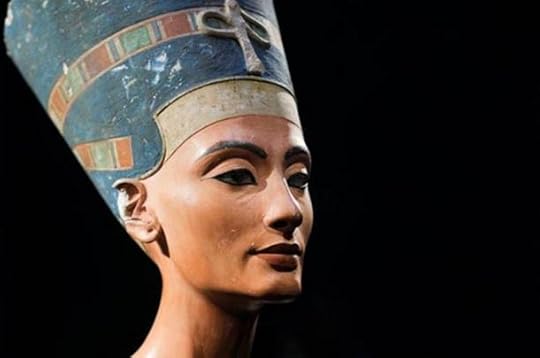 The iconic bust of Nefertiti, discovered by Ludwig Borchardt, is part of the Ägyptisches Museum Berlin collection, currently on display in the Altes Museum (public domain).Further InvestigationsThe Antiquities Minister announced at the press conference that the results will be sent to Japan for a month long analysis before the search is resumed.
The iconic bust of Nefertiti, discovered by Ludwig Borchardt, is part of the Ägyptisches Museum Berlin collection, currently on display in the Altes Museum (public domain).Further InvestigationsThe Antiquities Minister announced at the press conference that the results will be sent to Japan for a month long analysis before the search is resumed.
According to The National Geographic, El-Damaty has indicated that future plans will probably include the drilling of a small hole in the wall of the side room that is known as the Treasury, which adjoins the possible hidden chamber behind the north wall. Fortunately, that section of wall is not painted so the damage would be minimal.
By April Holloway
November 28, 2015
 A press conference held this morning in Luxor with Egyptian Antiquities Minister Mamdouh el-Damaty revealed the results of a three-day operation to scan behind the walls in the burial chamber of Tutankhamun. The official investigations were designed to test out the theory by archaeologist Nicholas Reeves that the tomb of Tutankhamun contains two hidden chambers and that one of them is the final resting place of Queen Nefertiti. According to the Minister, the scans show that “it’s 90 per cent likely there is something behind the walls”.
A press conference held this morning in Luxor with Egyptian Antiquities Minister Mamdouh el-Damaty revealed the results of a three-day operation to scan behind the walls in the burial chamber of Tutankhamun. The official investigations were designed to test out the theory by archaeologist Nicholas Reeves that the tomb of Tutankhamun contains two hidden chambers and that one of them is the final resting place of Queen Nefertiti. According to the Minister, the scans show that “it’s 90 per cent likely there is something behind the walls”.The Ministry of Antiquities in Egypt launched high-tech analyses within the boy king’s tomb on November 4 and initial infrared scans of the walls of Tutankhamun’s tomb detected an area of greater heat, which pointed to a hidden chamber. Three days of radar scans have now supported these initial findings.
"There is, in fact, an empty space behind the wall based on radar, which is very accurate, there is no doubt. We cannot say at this point however the size of the space behind the wall," Japanese radar specialist Hirokatsu Watanabe said [via ABC News]. "We have the data but we must analyse it to understand. But we are working in the Valley of the Kings, so we are expecting to find antiquities behind the wall."
El-Damaty added, "We can now say that we have to find behind the burial chamber of King Tutankhamun another chamber, another tomb."
Factum Arte scans reveal possible presence of hidden doorsNational Geographic reports that Nicholas Reeves first suspected hidden chambers in Tutankhamun’s tomb following a detailed examination of the Factum Arte scans of the artistic works on the walls of the tomb. Reeves noticed fissures that he thinks may indicate the presence of two sealed doors in the tomb’s north and west walls.
 Scans of the north wall of King Tutankhamun's burial chamber have revealed features beneath the intricately decorated plaster (highlighted) a researcher believes may be a hidden door, possibly to the burial chamber of Nefertiti. Credit: Factum Arte.“Cautious evaluation of the Factum Arte scans over the course of several months has yielded results which are beyond intriguing: indications of two previously unknown doorways, one set within a larger partition wall and both seemingly untouched since antiquity,”
writes Reeves in a paper
on his study of the scans. “The implications are extraordinary: for, if digital appearance translates into physical reality, it seems we are now faced not merely with the prospect of a new, Tutankhamun-era storeroom to the west; to the north appears to be signalled a continuation of tomb KV 62 and within these uncharted depths an earlier royal interment—that of Nefertiti herself, celebrated consort, co-regent, and eventual successor of pharaoh Akhenaten.”
Scans of the north wall of King Tutankhamun's burial chamber have revealed features beneath the intricately decorated plaster (highlighted) a researcher believes may be a hidden door, possibly to the burial chamber of Nefertiti. Credit: Factum Arte.“Cautious evaluation of the Factum Arte scans over the course of several months has yielded results which are beyond intriguing: indications of two previously unknown doorways, one set within a larger partition wall and both seemingly untouched since antiquity,”
writes Reeves in a paper
on his study of the scans. “The implications are extraordinary: for, if digital appearance translates into physical reality, it seems we are now faced not merely with the prospect of a new, Tutankhamun-era storeroom to the west; to the north appears to be signalled a continuation of tomb KV 62 and within these uncharted depths an earlier royal interment—that of Nefertiti herself, celebrated consort, co-regent, and eventual successor of pharaoh Akhenaten.”The Search Continues: Scientists to Use Radar in Hunt for the Tomb of Nefertiti Tutankhamun Death Mask was Made for Nefertiti, Archaeologist says The Elusive Tomb of Queen Nefertiti may lie behind the walls of Tutankhamun's Burial Chamber
 Image showing the location of the two chambers from Dr. Reeves report. The upcoming radar scan will search for their existence. (
Daily Mail
)Tutankhamun hastily buried in Nefertiti’s tomb?Reeves posits that King Tutankhamun’s tomb was unfinished when he died unexpectedly as a teenager in 1332 BC. Consequently, he was hastily buried in the tomb of Queen Nefertiti, the principal wife of Akhenaten, who is believed to have fathered Tutankhamun with another wife. Reeves believes that Tutankhamun’s tomb displaced part of Nefertiti's tomb and assumed some of her burial goods and space.
Image showing the location of the two chambers from Dr. Reeves report. The upcoming radar scan will search for their existence. (
Daily Mail
)Tutankhamun hastily buried in Nefertiti’s tomb?Reeves posits that King Tutankhamun’s tomb was unfinished when he died unexpectedly as a teenager in 1332 BC. Consequently, he was hastily buried in the tomb of Queen Nefertiti, the principal wife of Akhenaten, who is believed to have fathered Tutankhamun with another wife. Reeves believes that Tutankhamun’s tomb displaced part of Nefertiti's tomb and assumed some of her burial goods and space.Now, following the latest radar scans, Dr Reeves is more certain than ever that his theory is correct. "Clearly it does look from the radar evidence as if the tomb continues, as I have predicted," Mr Reeves said at the conference. "It does look indeed as if the tomb of Tutankhamun is a corridor tomb... and it continues beyond the decorated burial chamber," he added. "I think it is Nefertiti and all the evidence points in that direction."
Nefertiti was the chief consort of the Egyptian Pharaoh Akhenaten (formerly Amenhotep IV), who reigned from approximately 1353 to 1336 BC. Known as the Ruler of the Nile and Daughter of Gods, she acquired unprecedented power, and is believed to have held equal status to the pharaoh himself. However, much controversy lingers about Nefertiti after the twelfth regal year of Akhenaten, when her name vanishes from the pages of history. Despite numerous searches, her final resting place has never been found. She is one of the most searched-for queens in Egyptian history.
The Quest to find Nefertiti, Queen of the Nile The Mysterious Disappearance of Nefertiti, Ruler of the Nile
 The iconic bust of Nefertiti, discovered by Ludwig Borchardt, is part of the Ägyptisches Museum Berlin collection, currently on display in the Altes Museum (public domain).Further InvestigationsThe Antiquities Minister announced at the press conference that the results will be sent to Japan for a month long analysis before the search is resumed.
The iconic bust of Nefertiti, discovered by Ludwig Borchardt, is part of the Ägyptisches Museum Berlin collection, currently on display in the Altes Museum (public domain).Further InvestigationsThe Antiquities Minister announced at the press conference that the results will be sent to Japan for a month long analysis before the search is resumed.According to The National Geographic, El-Damaty has indicated that future plans will probably include the drilling of a small hole in the wall of the side room that is known as the Treasury, which adjoins the possible hidden chamber behind the north wall. Fortunately, that section of wall is not painted so the damage would be minimal.
“We can put a hole in it and put inside a small camera to look to the other side,” Eldamaty told the National Geographic. “If a camera reveals artifacts within, the ministry would likely have to investigate a way to safely remove the north wall and its paintings in order to access the chamber.”Featured image: The stone sarcophagus containing the mummy of King Tut is seen in his underground tomb. Credit: Nasser Nuri.
By April Holloway
November 28, 2015
Published on December 03, 2015 03:00
History Trivia - Galileo invents the telescope
December 3
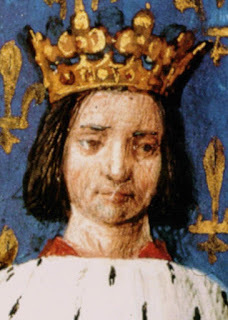
1368 Charles VI of France was born. Known as "Mad" and as "Well-Beloved," Charles had a long reign during which he remained primarily a figurehead because of his occasional fits of madness.
 1586 Sir Thomas Herriot introduced potatoes to England from Colombia.
1586 Sir Thomas Herriot introduced potatoes to England from Colombia.
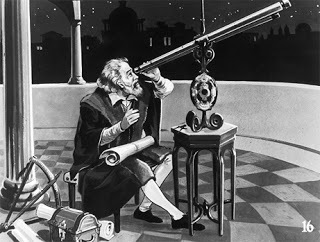
1621 Galileo invented the telescope.

1368 Charles VI of France was born. Known as "Mad" and as "Well-Beloved," Charles had a long reign during which he remained primarily a figurehead because of his occasional fits of madness.
 1586 Sir Thomas Herriot introduced potatoes to England from Colombia.
1586 Sir Thomas Herriot introduced potatoes to England from Colombia. 
1621 Galileo invented the telescope.
Published on December 03, 2015 02:00
December 2, 2015
Viking diet was better than in many parts of the Medieval world
Ancient Origins
 The Vikings are famous for their great feasting halls, in which an image of a rowdy bunch of beer-drinking men gnawing on meaty bones comes to mind. But what did they really consume besides beer and mead in their dining rooms? It turns out they had a rich and varied diet of both domestic and wild animals, grains and fruits, fish, fowl and other menu items they could grow, hunt or gather from nature.
The Vikings are famous for their great feasting halls, in which an image of a rowdy bunch of beer-drinking men gnawing on meaty bones comes to mind. But what did they really consume besides beer and mead in their dining rooms? It turns out they had a rich and varied diet of both domestic and wild animals, grains and fruits, fish, fowl and other menu items they could grow, hunt or gather from nature.
Vikings apparently ate better than their medieval counterparts in Britain, says a story on the Viking diet on History.com. One thing archaeologists know from studying medieval literature and examining the contents of ancient cesspits and sewers is that while most Vikings ate meat, they also unfortunately had intestinal worms and ingested some seeds in their bread from weeds that are poisonous to humans.
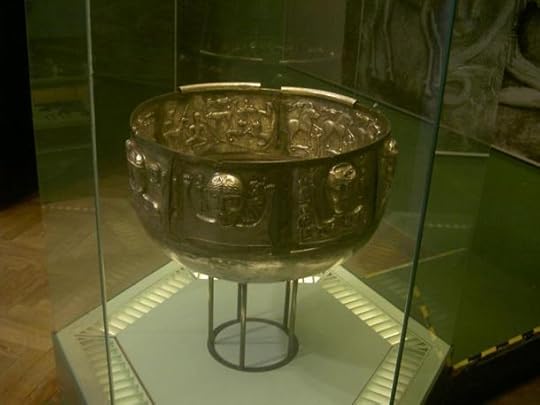 One of the primary ways of cooking meat among Vikings was to boil it in a stew called skause, perhaps in a cauldron this Gundestrup Cauldron from the National Museum of Denmark, Copenhagen. (
Wikimedia Commons
)The Viking era lasted from 800 to 1066 AD. They were based in Scandinavia but spread their conquests and settlements over much of Europe and into Russia and the British Isles.
One of the primary ways of cooking meat among Vikings was to boil it in a stew called skause, perhaps in a cauldron this Gundestrup Cauldron from the National Museum of Denmark, Copenhagen. (
Wikimedia Commons
)The Viking era lasted from 800 to 1066 AD. They were based in Scandinavia but spread their conquests and settlements over much of Europe and into Russia and the British Isles.
The Viking Answer Lady has a long blog detailing the rich and varied Viking diet. One interesting fact she points out is that beached whales were an important part of their diet. She said scholars have investigated midden or garbage heaps to find what types of animals bones were in them, analyzed bogs and lake bottoms for pollens to see what kinds of plants they consumed and also read the eddas and sagas for hints into their diet and culinary activities. She excerpts a passage from Egils saga Skallagrimssonar:
Skallagrim was also a great shipwright. There was plenty of driftwood to be had west of Myrar, so he built and ran another farm at Alftaness and from there his men went out fishing and seal-hunting, and collecting the eggs of wild fowl, for there was plenty of everything. They also fetched in his driftwood. Whales often got stranded, and you could shoot anything you wanted, for none of the wildlife was used to man and just stood around quietly. His third farm he built by the sea in the west part of Myrar. From there it was even easier to get the driftwood. He started sowing there and called the place Akrar (cornfields). There are some islands lying offshore where a whale had been washed up, so they called them the Hvals Isles (whale islands). Skallagrim also had his men go up the rivers looking for salmon, and settled Odd the Lone-dweller at the Gljufur River to look after the salmon-fishing.The Vikings apparently didn’t roast or fry their meat but rather boiled it. Some of the meat was game, but especially in the lower latitudes they ate domesticated cattle, horses, sheep and goats and pork. The most important kind of livestock, she writes, was cattle, which is known from bone remains. Also wooden remnants of holding pen partitions indicate some farms held up to 80 to 100 head.
Vikings also kept ducks, geese and chickens for meat and eggs.
In the northlands the Vikings hunted more and took elk, deer, reindeer, bear, boar, squirrels, hare and wildfowl more than their southern cousins, but they still hunted in the south too.
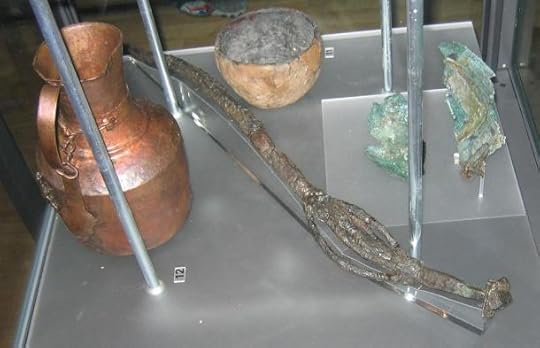 [image error]
[image error]
[image error]
[image error]

These goods from a Swedish grave included Viking vessels. (Photo by Berig/ Wikimedia Commons )Vikings fished the Atlantic Ocean and Baltic Sea for cod, haddock, herring, mackerel and other fish. They fished rivers for salmon and took shellfish from fresh- and saltwater. They hunted seals and porpoises but usually ate beached whales instead of hunting them.
They preserved meat by smoking, salting, fermenting, pickling and drying it. In the far North they could freeze it all year. But the most common preservation method, writes the Viking Answer Lady, was drying because this way it could be kept for year.
Dairy, vegetables and fruits, which were much wilder then than now; and seeds for oil were a big part of the Viking diet. They ate various types of berries, apples, sloes and plums and preserved them by drying them. They grew in gardens and gathered in the wild vegetables such as carrots, turnips, parsnips, spinach, celery, cabbage, fava beans, peas and radishes. They also ate leeks, seaweed, mushrooms and onions.
While they ate oats, barley and rye and made flatbread from the barley, most of it was used to make beer, the Viking Answer Lady writes. They prepared gruel, porridge and bread too.
All of this food sounds delicious and wonderful, but they apparently made it even tastier by adding herbs and spices.
“Dill, coriander and hops are known from Jorvík and the Danelaw,” she writes. “There is evidence from Dublin for poppyseed, black mustard, and fennel. The Oseberg burial included watercress, cumin, mustard, and horseradish. Other spices included lovage, parsley, mint, thyme, marjoram, wild caraway, juniper berries, and garlic. By the Middle Ages, Scandinavia had access to exotic spices obtained by trading. These included cumin, pepper, saffron, ginger, cardamom, grains of paradise, cloves, nutmeg, mace, cinnamon, anise-seed, and bay leaves. Vinegar was used as a flavoring in foods, as was honey.”
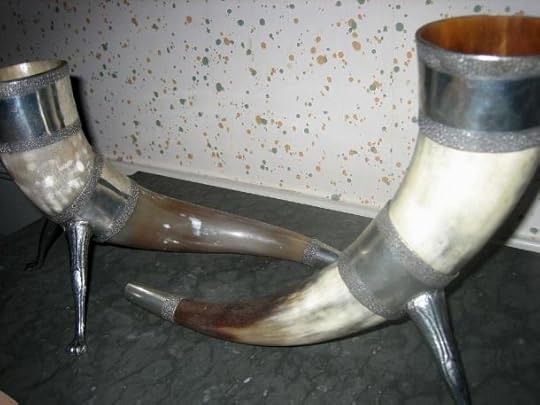 Viking drinking horns (Photo by Mararie/
Wikimedia Commons
)But what’s a hungry Viking to wash it all down with?
Viking drinking horns (Photo by Mararie/
Wikimedia Commons
)But what’s a hungry Viking to wash it all down with?
The Viking Answer Lady details some of the food-preparation methods and gives some recipes that speculate about how they prepared their food.
Featured image: Fermented shark, hákarl, is an example of a culinary tradition that has continued from the settlement of Iceland in the 9th century to this day. ( public domain )
By: Mark Miller
 The Vikings are famous for their great feasting halls, in which an image of a rowdy bunch of beer-drinking men gnawing on meaty bones comes to mind. But what did they really consume besides beer and mead in their dining rooms? It turns out they had a rich and varied diet of both domestic and wild animals, grains and fruits, fish, fowl and other menu items they could grow, hunt or gather from nature.
The Vikings are famous for their great feasting halls, in which an image of a rowdy bunch of beer-drinking men gnawing on meaty bones comes to mind. But what did they really consume besides beer and mead in their dining rooms? It turns out they had a rich and varied diet of both domestic and wild animals, grains and fruits, fish, fowl and other menu items they could grow, hunt or gather from nature.Vikings apparently ate better than their medieval counterparts in Britain, says a story on the Viking diet on History.com. One thing archaeologists know from studying medieval literature and examining the contents of ancient cesspits and sewers is that while most Vikings ate meat, they also unfortunately had intestinal worms and ingested some seeds in their bread from weeds that are poisonous to humans.
 One of the primary ways of cooking meat among Vikings was to boil it in a stew called skause, perhaps in a cauldron this Gundestrup Cauldron from the National Museum of Denmark, Copenhagen. (
Wikimedia Commons
)The Viking era lasted from 800 to 1066 AD. They were based in Scandinavia but spread their conquests and settlements over much of Europe and into Russia and the British Isles.
One of the primary ways of cooking meat among Vikings was to boil it in a stew called skause, perhaps in a cauldron this Gundestrup Cauldron from the National Museum of Denmark, Copenhagen. (
Wikimedia Commons
)The Viking era lasted from 800 to 1066 AD. They were based in Scandinavia but spread their conquests and settlements over much of Europe and into Russia and the British Isles.The Viking Answer Lady has a long blog detailing the rich and varied Viking diet. One interesting fact she points out is that beached whales were an important part of their diet. She said scholars have investigated midden or garbage heaps to find what types of animals bones were in them, analyzed bogs and lake bottoms for pollens to see what kinds of plants they consumed and also read the eddas and sagas for hints into their diet and culinary activities. She excerpts a passage from Egils saga Skallagrimssonar:
Skallagrim was also a great shipwright. There was plenty of driftwood to be had west of Myrar, so he built and ran another farm at Alftaness and from there his men went out fishing and seal-hunting, and collecting the eggs of wild fowl, for there was plenty of everything. They also fetched in his driftwood. Whales often got stranded, and you could shoot anything you wanted, for none of the wildlife was used to man and just stood around quietly. His third farm he built by the sea in the west part of Myrar. From there it was even easier to get the driftwood. He started sowing there and called the place Akrar (cornfields). There are some islands lying offshore where a whale had been washed up, so they called them the Hvals Isles (whale islands). Skallagrim also had his men go up the rivers looking for salmon, and settled Odd the Lone-dweller at the Gljufur River to look after the salmon-fishing.The Vikings apparently didn’t roast or fry their meat but rather boiled it. Some of the meat was game, but especially in the lower latitudes they ate domesticated cattle, horses, sheep and goats and pork. The most important kind of livestock, she writes, was cattle, which is known from bone remains. Also wooden remnants of holding pen partitions indicate some farms held up to 80 to 100 head.
Vikings also kept ducks, geese and chickens for meat and eggs.
In the northlands the Vikings hunted more and took elk, deer, reindeer, bear, boar, squirrels, hare and wildfowl more than their southern cousins, but they still hunted in the south too.
 [image error]
[image error]
[image error]
[image error]
These goods from a Swedish grave included Viking vessels. (Photo by Berig/ Wikimedia Commons )Vikings fished the Atlantic Ocean and Baltic Sea for cod, haddock, herring, mackerel and other fish. They fished rivers for salmon and took shellfish from fresh- and saltwater. They hunted seals and porpoises but usually ate beached whales instead of hunting them.
They preserved meat by smoking, salting, fermenting, pickling and drying it. In the far North they could freeze it all year. But the most common preservation method, writes the Viking Answer Lady, was drying because this way it could be kept for year.
Dairy, vegetables and fruits, which were much wilder then than now; and seeds for oil were a big part of the Viking diet. They ate various types of berries, apples, sloes and plums and preserved them by drying them. They grew in gardens and gathered in the wild vegetables such as carrots, turnips, parsnips, spinach, celery, cabbage, fava beans, peas and radishes. They also ate leeks, seaweed, mushrooms and onions.
While they ate oats, barley and rye and made flatbread from the barley, most of it was used to make beer, the Viking Answer Lady writes. They prepared gruel, porridge and bread too.
All of this food sounds delicious and wonderful, but they apparently made it even tastier by adding herbs and spices.
“Dill, coriander and hops are known from Jorvík and the Danelaw,” she writes. “There is evidence from Dublin for poppyseed, black mustard, and fennel. The Oseberg burial included watercress, cumin, mustard, and horseradish. Other spices included lovage, parsley, mint, thyme, marjoram, wild caraway, juniper berries, and garlic. By the Middle Ages, Scandinavia had access to exotic spices obtained by trading. These included cumin, pepper, saffron, ginger, cardamom, grains of paradise, cloves, nutmeg, mace, cinnamon, anise-seed, and bay leaves. Vinegar was used as a flavoring in foods, as was honey.”
 Viking drinking horns (Photo by Mararie/
Wikimedia Commons
)But what’s a hungry Viking to wash it all down with?
Viking drinking horns (Photo by Mararie/
Wikimedia Commons
)But what’s a hungry Viking to wash it all down with?“Alcoholic drinks were heartily consumed, this being one way to preserve carbohydrate calories for winter consumption, and consisted usually of ale. Hops and bog myrtle were used to flavor ale,” she writes.They also drank mead, milk, whey, and water.
The Viking Answer Lady details some of the food-preparation methods and gives some recipes that speculate about how they prepared their food.
Featured image: Fermented shark, hákarl, is an example of a culinary tradition that has continued from the settlement of Iceland in the 9th century to this day. ( public domain )
By: Mark Miller
Published on December 02, 2015 03:00
History Trivia - St Paul's Cathedral opens in London
December 2
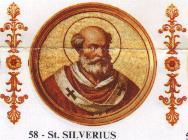
537 Pope Saint Silverius died. When Silverius refused to restore Anthimus as Patriarch of Constantinople, Empress Theodora ordered him deposed. He was banished and died on the island of Palmaria, allegedly murdered or starved to death.
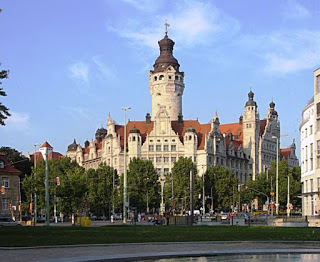
1409 The University of Leipzig was founded by Frederick I, Elector of Saxony and his brother William II, Margrave of Meissen, and originally comprised four faculties. Since its inception the university has enjoyed over 600 years of uninterrupted teaching and research.
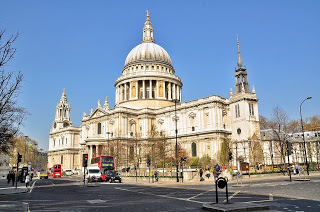
1697 St Paul's Cathedral opened in London.

537 Pope Saint Silverius died. When Silverius refused to restore Anthimus as Patriarch of Constantinople, Empress Theodora ordered him deposed. He was banished and died on the island of Palmaria, allegedly murdered or starved to death.

1409 The University of Leipzig was founded by Frederick I, Elector of Saxony and his brother William II, Margrave of Meissen, and originally comprised four faculties. Since its inception the university has enjoyed over 600 years of uninterrupted teaching and research.

1697 St Paul's Cathedral opened in London.
Published on December 02, 2015 02:30
December 1, 2015
Timeline: The rise and fall of the Roman games
History Extra
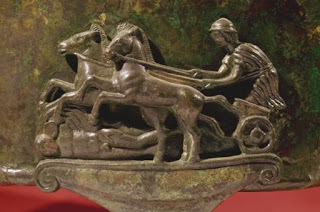 A heroic charioteer is immortalised in bronze. © BAL
A heroic charioteer is immortalised in bronze. © BAL
753 BC
The traditional date given for the first chariot race between the Roman people and their neighbours, the Sabines, organised by Rome’s legendary founder, Romulus.
264 BC
The first recorded gladiatorial fight to the death is staged between slaves at the funeral of aristocrat Brutus Pera, in the Forum Boarium, Rome.

Roman gladiators. © TopFoto
174 BC
The Roman Consul, Gaius Flaminius, hosts a games within a purpose-built timber arena constructed in the Forum Romanum. It stars 74 gladiators, fighting over a three-day period.
174 BC
The Circus Maximus chariot race-track is rebuilt in stone. It can now seat some 150,000 spectators, but it will be developed further, making room for 100,000 more.
73 BC
The gladiator Spartacus leads a slave revolt from the training school at Capua.

© Mary Evans
65 BC
Opponents of Julius Caesar, worried that he is staking a claim for supreme power, attempt to curb the number of gladiators owned by any one individual. Despite this, Caesar’s games go ahead, with over 640 gladiators fighting to the death.
29 BC
The first purpose-built stone amphitheatre is constructed by General Titus Statilius Taurus in Rome. Taurus also paid for the inaugural games.
AD 37
The emperor Caligula entertains the crowds by having criminals thrown to carnivorous wild animals in the arena.

Emperor Caligula. © SuperStock
AD 59
Large numbers of spectators are killed in rioting at the Pompeian games. Outraged, the Senate bans Pompeii from hosting any games for a decade.
AD 67
Emperor Nero takes part in a ten-horse chariot race in Greece and, although he fails to finish, falling from the car during the event, he later claims to have won.
AD 70
Construction of the Flavian amphitheatre – now known as the Colosseum – is begun by Emperor Vespasian.

The Colosseum in Rome. © Thinkstock
AD 80
The inaugural games of the Colosseum are held by Emperor Titus. Over 100 days of celebratory combat ensue, during which time thousands of wild animals – and quite a few slave warriors – are killed.
AD 112
Emperor Trajan hosts three months of games with the participation of over 10,000 gladiators.
c146 AD
The most successful charioteer, Gaius Appuleius Diocles, winner of over 1,000 races, retires at the age of 42, being hailed the ‘champion of charioteers’.
AD 180-192
Throughout his reign, Emperor Commodus takes part in gladiatorial combat, allegedly ensuring victory by making sure his opponents have extra-heavy weapons made of lead.
AD 380
After Christianity becomes the state faith, the Church attempts to limit the popularity of the games, declaring that those who participate in them are ineligible for baptism.

Christian icons, such as halos, start to appear on Roman artworks. © Superstock
AD 681
After centuries of waning popularity, and with the decline of the Roman Empire, gladiatorial combat is officially banned as a sport.
Dr Miles Russell is a senior lecturer in prehistoric and Roman archaeology at Bournemouth University.
 A heroic charioteer is immortalised in bronze. © BAL
A heroic charioteer is immortalised in bronze. © BAL 753 BC
The traditional date given for the first chariot race between the Roman people and their neighbours, the Sabines, organised by Rome’s legendary founder, Romulus.
264 BC
The first recorded gladiatorial fight to the death is staged between slaves at the funeral of aristocrat Brutus Pera, in the Forum Boarium, Rome.

Roman gladiators. © TopFoto
174 BC
The Roman Consul, Gaius Flaminius, hosts a games within a purpose-built timber arena constructed in the Forum Romanum. It stars 74 gladiators, fighting over a three-day period.
174 BC
The Circus Maximus chariot race-track is rebuilt in stone. It can now seat some 150,000 spectators, but it will be developed further, making room for 100,000 more.
73 BC
The gladiator Spartacus leads a slave revolt from the training school at Capua.

© Mary Evans
65 BC
Opponents of Julius Caesar, worried that he is staking a claim for supreme power, attempt to curb the number of gladiators owned by any one individual. Despite this, Caesar’s games go ahead, with over 640 gladiators fighting to the death.
29 BC
The first purpose-built stone amphitheatre is constructed by General Titus Statilius Taurus in Rome. Taurus also paid for the inaugural games.
AD 37
The emperor Caligula entertains the crowds by having criminals thrown to carnivorous wild animals in the arena.

Emperor Caligula. © SuperStock
AD 59
Large numbers of spectators are killed in rioting at the Pompeian games. Outraged, the Senate bans Pompeii from hosting any games for a decade.
AD 67
Emperor Nero takes part in a ten-horse chariot race in Greece and, although he fails to finish, falling from the car during the event, he later claims to have won.
AD 70
Construction of the Flavian amphitheatre – now known as the Colosseum – is begun by Emperor Vespasian.

The Colosseum in Rome. © Thinkstock
AD 80
The inaugural games of the Colosseum are held by Emperor Titus. Over 100 days of celebratory combat ensue, during which time thousands of wild animals – and quite a few slave warriors – are killed.
AD 112
Emperor Trajan hosts three months of games with the participation of over 10,000 gladiators.
c146 AD
The most successful charioteer, Gaius Appuleius Diocles, winner of over 1,000 races, retires at the age of 42, being hailed the ‘champion of charioteers’.
AD 180-192
Throughout his reign, Emperor Commodus takes part in gladiatorial combat, allegedly ensuring victory by making sure his opponents have extra-heavy weapons made of lead.
AD 380
After Christianity becomes the state faith, the Church attempts to limit the popularity of the games, declaring that those who participate in them are ineligible for baptism.

Christian icons, such as halos, start to appear on Roman artworks. © Superstock
AD 681
After centuries of waning popularity, and with the decline of the Roman Empire, gladiatorial combat is officially banned as a sport.
Dr Miles Russell is a senior lecturer in prehistoric and Roman archaeology at Bournemouth University.
Published on December 01, 2015 03:00
History Trivia - Festival of Juno
December 1

The Festival of Juno occurred on this day.
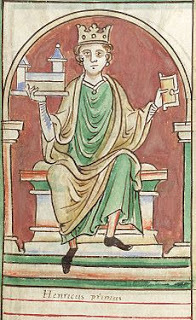
1135 Henry I of England died and the crown was passed to his nephew Stephen of Blois instead of his daughter Matilda , which resulted in civil war (the Anarchy). The dispute was settled when Stephen named Matilda's son Henry Plantagenet as his heir.
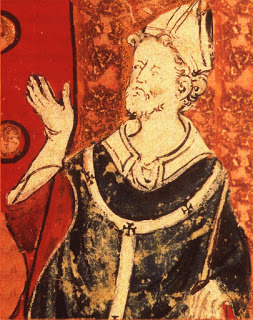
1170 Becket returned to Canterbury. After establishing an uneasy reconciliation with Henry II, the Archbishop returned to his See, ending a six-year-long self-imposed exile.

The Festival of Juno occurred on this day.

1135 Henry I of England died and the crown was passed to his nephew Stephen of Blois instead of his daughter Matilda , which resulted in civil war (the Anarchy). The dispute was settled when Stephen named Matilda's son Henry Plantagenet as his heir.

1170 Becket returned to Canterbury. After establishing an uneasy reconciliation with Henry II, the Archbishop returned to his See, ending a six-year-long self-imposed exile.
Published on December 01, 2015 02:00
November 30, 2015
5 surprising Tudor facts
History Extra
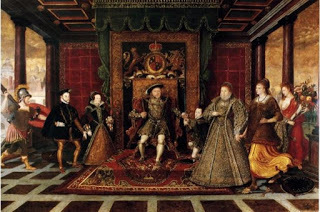 The family of Henry VIII, c1572. (Photo by Universal History Archive/Getty Images) 1) The Tudors wore spectaclesIn 1541, the grandmother of Henry VIII’s fifth wife, Katherine Howard, under suspicion for her knowledge of the queen’s pre-marital sexual affairs, broke into coffers belonging to two of the men involved and sent for her spectacles to read the letters that she found. Since she was doing this by candlelight in the middle of the night, it’s not surprising she needed a little help to read – and then burn – these incriminating documents.
The family of Henry VIII, c1572. (Photo by Universal History Archive/Getty Images) 1) The Tudors wore spectaclesIn 1541, the grandmother of Henry VIII’s fifth wife, Katherine Howard, under suspicion for her knowledge of the queen’s pre-marital sexual affairs, broke into coffers belonging to two of the men involved and sent for her spectacles to read the letters that she found. Since she was doing this by candlelight in the middle of the night, it’s not surprising she needed a little help to read – and then burn – these incriminating documents.Spectacles at this time were usually armless, designed to sit on the bridge of the nose or to be handheld. Although they were useful for reading, they wouldn’t have been particularly helpful for people who needed to wear them all the time. Poor eyesight was common in Tudor England and there was little that could be done about it. The many remedies for eye conditions that can be found in early modern medical recipe books show that people certainly tried to cure themselves – but the vast array of remedies suggests none of them were very effective!
2) The official penalty for brawling within the royal court was the loss of a handWith a court full of young and rowdy men, Henry VIII felt that a deterrent was necessary to control his courtiers, and he chose to make the punishment fit the crime. In 1541 Sir Edmund Knyvett [the eldest son of distinguished courtier and sea captain Sir Thomas Knyvet] had a fight on the tennis court with one of the Earl of Surrey’s servants, Thomas Clere, and landed a punch on Clere’s nose. Knyvett was arraigned for this later in the year and sentenced to lose his hand.
Apparently the royal surgeon would be the one to sever the hand; the king’s mastercook supplied the knife; and the sergeant farrier [the person in charge of providing horses with shoes] the hot iron to sear the wound, while the sergeant of the cellar [the person in charge of the court’s alcohol] supplied alcohol (for the spectators, not the victim).
Knyvett is said to have pleaded that his left hand be cut off, so that he could continue to serve the king with his right. Happily for Knyvett, in the end he was pardoned, but the king put out a proclamation then and there that in future, anyone found brawling within the precincts of the court would definitely lose a hand.
3) Elizabeth I could be violentShe may not have borne arms or led an army, but Elizabeth I could be quite violent in a domestic setting. When in a rage, she swore like a trooper and could apparently be heard several rooms away.
Elizabeth was not above abusing her ladies-in-waiting; in 1576, when she discovered that Mary Shelton had secretly married courtier Sir John Scudamore two years previously, she flew into a rage and rained blows on the unfortunate Mary, and according to some sources may have broken her finger.
Elizabeth I wasn’t above throwing things either; there is a story that she once threw a slipper at her spymaster, Sir Francis Walsingham. Elizabeth also had no toleration for lack of respect: one day in 1598, Robert Devereux, Earl of Essex, turned his back on the queen during a heated argument. For this unthinkable breach of court etiquette, Elizabeth promptly boxed his ears, at which point Essex placed his hand on his sword hilt [handle]. Shocked courtiers scrambled to put themselves between him and the queen, and Essex stormed out of the room.
4) Tudor aristocrats gave each another some interesting presentsGift-giving was a key element of the patronage system; if you wanted something done, you gave the relevant person a gift, since this would in theory force them to reciprocate by doing whatever it was that you wanted. Gifts could be very personal, such as jewellery worn by the giver, or clothing.Food items could also be given as gifts; for example, noblewoman Lady Honor Lisle prided herself on her homemade quince marmalade [quince is a fruit similar in appearance to a pear]. Some food items were rather more exotic, and letters testify to attempts to transport seal and porpoise before they went bad.Sometimes even live animals were given as gifts. Lady Lisle sought advice on a gift for Anne Boleyn in the 1530s and was told that the queen hated monkeys, but liked spaniels. Plus, Princess Mary (later Mary I) was given a parrot by the Countess of Derby in 1538.New Year’s Day, rather than Christmas, was the biggest gift-giving day for the Tudors, and nobles competed to give the king or queen the best present. Such gifts usually involved vast quantities of gold and jewels, but were sometimes more inventive: the Duke of Norfolk gave Henry VIII a chess set in 1532, and in 1557 Mary I and her husband, Philip II of Spain, were given “a Map of England, stayned upon cloth of silver in a frame of wood”. It is also said that Elizabeth I’s courtiers indulged her love of clothes with gifts of gowns and fabric.
5) All Tudor monarchs, and many aristocrats, adopted or inherited mottos that would be used alongside their personal symbol or ‘badge’ on their servants’ livery [uniform]These mottos could change to reflect important events or occasions, such as a marriage, and temporary mottos were worn during tournaments.
Some of these mottos are well known: Henry VIII’s ‘Coeur Loyale’ (Loyal Heart) in 1511 after the birth of Prince Henry; ‘Declare, I Dare Not’ in 1526, which is thought to relate to Anne Boleyn; and the royal motto still used by our queen today, ‘Dieu et mon droit’ (God and my right)'. Some mottos are less well known – for example, Mary I’s was ‘Truth, the daughter of time’.
Some Tudor mottos have a peculiarly modern feel. Philip II’s motto when king of Spain was ‘The world is not enough’ – apt for a man who controlled Spain, the Netherlands, parts of Italy, and swathes of Germany! Anne Boleyn used the motto ‘Ainsi sera, groigne qui groigne’, during the Christmas period in 1530, which in modern idiom is more or less ‘Haters gonna hate’ – a clear reference to her intention to marry Henry VIII.
Dr Nicola Clark is an early modern historian specialising in gender and court history at Royal Holloway, University of London, and the University of Chichester. Her book, Gender, Family and Politics: The Howard Women, 1485–1558 is forthcoming with Oxford University Press.
Published on November 30, 2015 03:00
History Trivia - Cnut, king of Denmark, claims the throne of all England
November 30
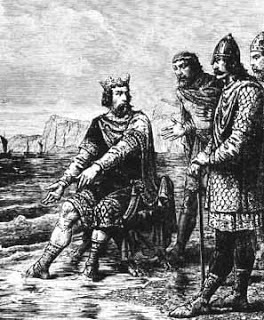
1016 Cnut, king of Denmark, claimed the throne of all England after Edmund 'Ironside', king of England, died.
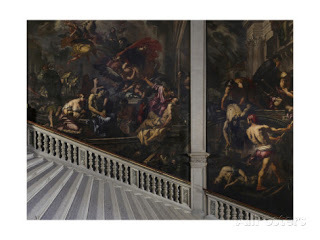
1630 16,000 inhabitants of Venice died this month of plague.
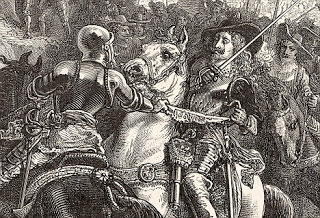
1648 English army captured King Charles I.

1016 Cnut, king of Denmark, claimed the throne of all England after Edmund 'Ironside', king of England, died.

1630 16,000 inhabitants of Venice died this month of plague.

1648 English army captured King Charles I.
Published on November 30, 2015 01:30
November 29, 2015
French Egyptologist Asserts that the Younger Lady is Really the Mummy of Nefertiti
Ancient Origins
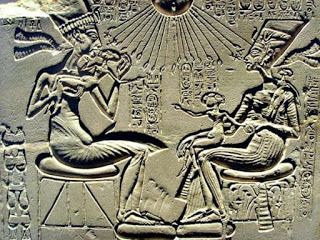
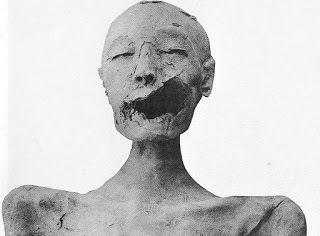
[image error] [image error]
French Egyptologist Marc Gabolde, specialist in the Eighteenth Dynasty and the Amarna period, argues that the mummy known as the "Younger Lady" discovered almost a century ago, is actually the famous and much sought after Queen Nefertiti.
As Ancient Origins reported on Monday, the British researcher Nicholas Reeves is currently located in Luxor, Egypt. Reeves says that inside the tomb of Pharaoh Tutankhamun, discovered by Howard Carter 93 years ago, there is access to a secret chamber which contains the long sought after tomb of the beautiful Nefertiti. The renowned Egyptologist, member of the University of Arizona, says he arrived at this conclusion after observing high resolution images of the tomb of the famous pharaoh, where he saw some fine cracks that correspond to the sealed entrance to what he believes is a hidden chamber - in which the mortal remains of the wife of the revolutionary pharaoh Akhenaten may rest.
However, for Marc Gabolde, French Egyptologist specialist in the Eighteenth Dynasty and the Egyptian Armana period, the mummy of Nefertiti was discovered almost a century ago in the Valley of the Kings by fellow Frenchman Victor Loret – a mummy currently found in the Egyptian Museum and which is known as the Younger Lady or KV35YL mummy.
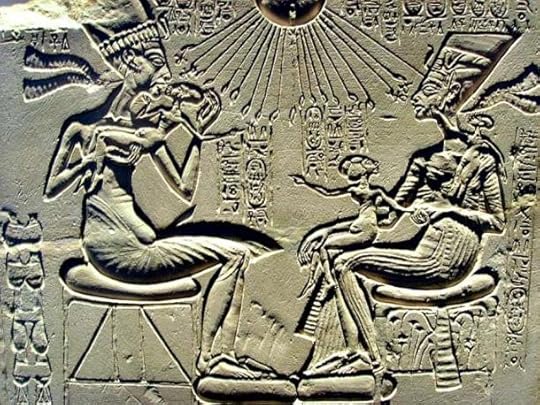 Limestone relief that was probably part of a family worship altar. Akhenaten holding up his firstborn Meritaten and, in front of both, Nefertiti holds Meketaton, her second daughter (who died prematurely), in her lap. On her left shoulder is Anjesenpaaton her third daughter, who later would marry Tutankhamen. Berlin Museum. (
CC BY SA 3.0
)Royal Tombs Smaller than UsualIn
statements to the Spanish newspaper ABC
, Gabolde claims that the existence of two chambers in the tomb of Tutankhamen is nothing out of the ordinary, in view of other royal tombs in the Valley of the Kings, such as those of Amenhotep II (KV 35), Thutmose IV (KV 43), Amenhotep III (WV 22), and even that of Horemheb (KV 57). He also believes that the burial chamber of Tutankhamun being noticeably smaller simply indicates that the chamber was made “reasonable” to the size necessary for Tutankhamun. He continues that it is no wonder, given the economy of the time, that four secondary chambers were reduced to two. “There is absolutely nothing abnormal,” says the scholar and member of the University of Montpellier.
Limestone relief that was probably part of a family worship altar. Akhenaten holding up his firstborn Meritaten and, in front of both, Nefertiti holds Meketaton, her second daughter (who died prematurely), in her lap. On her left shoulder is Anjesenpaaton her third daughter, who later would marry Tutankhamen. Berlin Museum. (
CC BY SA 3.0
)Royal Tombs Smaller than UsualIn
statements to the Spanish newspaper ABC
, Gabolde claims that the existence of two chambers in the tomb of Tutankhamen is nothing out of the ordinary, in view of other royal tombs in the Valley of the Kings, such as those of Amenhotep II (KV 35), Thutmose IV (KV 43), Amenhotep III (WV 22), and even that of Horemheb (KV 57). He also believes that the burial chamber of Tutankhamun being noticeably smaller simply indicates that the chamber was made “reasonable” to the size necessary for Tutankhamun. He continues that it is no wonder, given the economy of the time, that four secondary chambers were reduced to two. “There is absolutely nothing abnormal,” says the scholar and member of the University of Montpellier.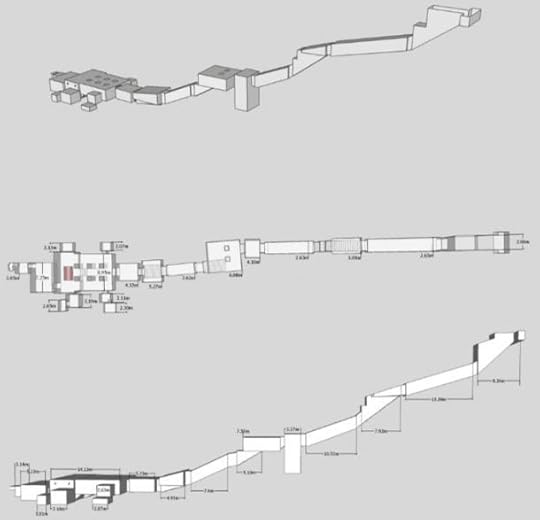 Images of the plan of the KV57 tomb belonging to Horemheb, made from a three-dimensional model. (
CC BY SA 3.0
)The researcher also explained that there are other tombs of Egyptian pharaohs like
Ay
, successor of Tutankhamun, in which all auxiliary chambers are absent, and also recalls how when
Ramses I
died, workers had barely begun the second ramp to his tomb. In fact his son Seti I:
Images of the plan of the KV57 tomb belonging to Horemheb, made from a three-dimensional model. (
CC BY SA 3.0
)The researcher also explained that there are other tombs of Egyptian pharaohs like
Ay
, successor of Tutankhamun, in which all auxiliary chambers are absent, and also recalls how when
Ramses I
died, workers had barely begun the second ramp to his tomb. In fact his son Seti I:“Simply extended the corridor to be a burial chamber provided with two annexes and a half and not the four required. If there was not much time, digging all adjoining areas did not seem to be a priority. Considering all this, the presence of additional chambers in the tomb of Tutankhamun is less "obvious" than Reeves suggests that it is,” Gabolde said.The Mysterious Disappearance of Nefertiti, Ruler of the NileThe tragedy of Queen Ankhesenamun, sister and wife of TutankhamunThe Mystery of Egyptian Tomb KV55 in the Valley of the KingsThe Lost Tomb of Imhotep?Furthermore, the signs discovered by Reeves do not necessarily, according to Gabolde, need to be traces of sealed doors, instead they:
“Could be marks left by two teams of carvers or have been part of a project to create additional chambers, abandoned in a hurry, with slits hastily recapped. I sincerely hope that Reeves is partially right and does find a sealed room with the remains of a pharaoh queen behind the paintings because it may clarify the identity of the pharaoh’s queen. However, this is more likely to be Meritaten than Nefertiti.” According to the Egyptologist in his statements published in ABC.The Mummy of the Younger LadyIn September 2010, National Geographic announced the results of an investigation conducted by an interdisciplinary team led by the famous and controversial Egyptologist Zahi Hawass . With it, it was verified through DNA tests that the KV35 mummies were actually the grandmother and the mother of Tutankhamun.
Marc Gabolde believes that the mummy identified in these studies as Tutankhamun's mother - or the Younger Lady - is really the mummy of Queen Nefertiti. “Nefertiti was Akhenaten's cousin, both by paternal and maternal ancestry and is identical to the mummy KV35YL. She is the mother of Tutankhamun.”
According to the French Egyptologist’s hypothesis, strong inbreeding probably would have caused "genetic mixing to have been quite weak, which would explain the genetic heritage of Akhenaten and Nefertiti having the appearance of a brother and a sister."
 Profile picture of the “Younger Lady” mummy who, according to genetic studies, corresponded to the mother of Tutankhamun. According to Marc Gabolde it is really the mummy of Nefertiti. (
Public Domain
)Gabolde indicates in his latest book, focused on the figure of Tutankhamun, that Nefertiti would have died a few months before her husband “never having been pharaoh.” Not that she would have ruled Egypt between Akhenaten and Tutankhamun anyway, as it would have been
Meritaten
, the oldest of the six daughters born of the marriage between Nefertiti and Akhenaten, who would have done so.
Profile picture of the “Younger Lady” mummy who, according to genetic studies, corresponded to the mother of Tutankhamun. According to Marc Gabolde it is really the mummy of Nefertiti. (
Public Domain
)Gabolde indicates in his latest book, focused on the figure of Tutankhamun, that Nefertiti would have died a few months before her husband “never having been pharaoh.” Not that she would have ruled Egypt between Akhenaten and Tutankhamun anyway, as it would have been
Meritaten
, the oldest of the six daughters born of the marriage between Nefertiti and Akhenaten, who would have done so.“Bolstered by her prestigious heritage and the fact that she was, for some months, the “great royal wife” of her father - probably only honorary title after the death of Nefertiti, Meritaten reigned about two full years,” according to Gabolde. The tomb of the eldest daughter of Akhenaten has not yet been discovered.
These are hypotheses, studies, and absolutely exciting and interesting opinions, that perhaps within hours, may come collapsing down, if the British Nicholas Reeves is right and behind the walls of the tomb of Tutankhamun are the remains of Nefertiti.
 Bust of Meritaten, daughter of Nefertiti and Akhenaten and Great Royal Wife of the Eighteenth Dynasty. Louvre, Paris. (
CC BY SA 1.0
)Featured image: Front view of the mummy of the "Younger Lady". (
Public Domain
)
Bust of Meritaten, daughter of Nefertiti and Akhenaten and Great Royal Wife of the Eighteenth Dynasty. Louvre, Paris. (
CC BY SA 1.0
)Featured image: Front view of the mummy of the "Younger Lady". (
Public Domain
)Author: Mariló TA
This article was first published in Spanish at https://www.ancient-origins.es and has been translated with permission.
Published on November 29, 2015 03:00



